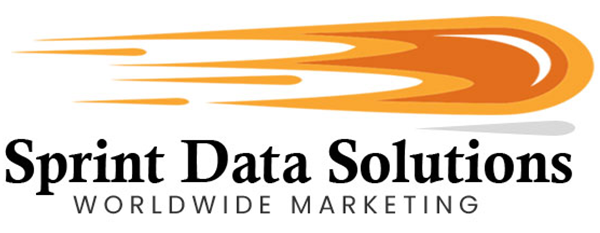Insurance Becomes More Important In Times Of Volatility
Insurance epitomizes the principle of “It’s better to have it and not need it than to need it and not have it.” Life’s unpredictability means that accidents and unforeseen events can lead to substantial financial burdens. Whether it’s a car accident, a natural disaster, or a medical emergency, the costs associated with recovery can be overwhelming. Without adequate financial resources, individuals or businesses may struggle to manage these expenses.
This is where insurance becomes indispensable. By paying a regular premium, policyholders transfer the financial risk of these potential catastrophes to the insurance provider. In return, they gain a safety net that can cover significant costs associated with accidents or damages. This mechanism allows individuals and businesses to navigate through crises without depleting their own savings or incurring debilitating debt. Essentially, insurance offers peace of mind and financial stability by ensuring that when the unexpected occurs, there is a structured way to handle the financial impact, making it a crucial component of prudent financial planning.
In many situations, insurance isn’t merely a prudent choice but a legal requirement. For instance, vehicle owners in most U.S. states must carry auto insurance before they are permitted to drive on public roads. While insurance premiums can sometimes seem like an unnecessary expense when everything is going well, they play a crucial role in safeguarding individuals and businesses against potentially devastating financial losses.
Insurance is often likened to “vegetables” in American culture—it’s widely acknowledged as essential and beneficial, yet many people don’t fully engage with its complexities. This tendency to overlook the intricacies of insurance can lead to missed opportunities for optimizing coverage or discovering better options.
Effective marketing and clear communication about insurance are vital in addressing this gap. By highlighting the specific benefits of different policies and uncovering the hidden drawbacks of existing coverage, insurance providers can help consumers and business managers make informed decisions. Educating potential policyholders about the nuances of insurance options not only fosters a better understanding but also encourages them to evaluate their current policies critically. This can lead to more strategic choices, such as switching to a more suitable policy or securing coverage for previously uninsured risks, ultimately ensuring they are better protected when the unexpected happens.

Who Benefits?
Insurance encompasses a wide range of products designed to meet the diverse needs of both individuals and businesses across the United States. To effectively reach and serve these markets, it’s crucial to identify specific areas where insurance can make a meaningful impact:
Health Insurance
Health insurance often weighs heavily on the minds of Americans, particularly given the high costs associated with medical care in one of the most advanced nations globally. Despite significant medical advancements and breakthrough treatments available in the U.S., the expenses can be prohibitive for many, especially those without access to comprehensive health insurance through their employers. For individuals and families facing severe health issues, the financial burden of necessary, life-saving treatments can lead to long-term financial hardship or even bankruptcy.
This reality drives many people to seek out better health insurance options. Although the Affordable Care Act (ACA) has improved access to healthcare by providing more coverage options and subsidies, many still find the system lacking. Gaps in coverage, rising premiums, and high out-of-pocket costs contribute to ongoing concerns about affordability and adequacy.
In this context, there is a significant opportunity for health insurance providers to present viable alternatives that address these challenges. Offering innovative plans that balance affordability with comprehensive coverage can capture the attention of those dissatisfied with current options. By providing clearer, more accessible, and cost-effective health insurance solutions, insurers can meet the needs of a population still deeply concerned about the soaring costs of healthcare and the impact on their financial stability.
Medicare Part B
Alongside traditional health insurance, “Medicare Part B” represents a crucial component of healthcare financing that many Americans focus on, especially as they approach retirement age or face specific medical needs. While high-cost medical procedures like surgeries or cancer treatments often dominate discussions about healthcare expenses, Medicare Part B addresses a wide range of additional costs that can significantly impact individuals’ financial well-being.
Medicare Part B covers essential services beyond major treatments, including routine doctor visits, outpatient care, diagnostic tests, ambulance services, medical supplies such as wheelchairs and glucose monitors, and mental health care. These expenses can accumulate quickly and become substantial over time, making Medicare Part B a critical consideration for many.
Consumer concerns about Medicare Part B can be as significant, if not greater, than those related to general health insurance. This is due to the broad spectrum of covered services and the financial implications of these everyday costs. As such, there is substantial interest in Medicare Part B coverage options, particularly among seniors and those approaching retirement.
Effective targeting and marketing of Medicare Part B insurance can capture the attention of this demographic by highlighting how these policies address specific needs and provide financial relief for a range of healthcare services. By offering clear information and tailored solutions, insurers can engage potential clients and meet the growing demand for comprehensive Medicare coverage that supports both immediate and long-term health needs.
Life Insurance
The death of a loved one is an inevitable and profoundly affecting event, with significant emotional and financial repercussions for surviving family members and friends. This impact is especially pronounced when the deceased was a primary financial provider, supporting essential needs such as household expenses, education, and daily living costs for dependents, including children.
Life insurance has long been a foundational element of financial planning, designed to offer support and stability in such challenging times. Despite its long-standing presence, many Americans are well-acquainted with the concept of life insurance and its role in providing financial security after a loss. However, life insurance is inherently complex, with various policies featuring intricate terms, conditions, and additional riders that can sometimes lead to unforeseen complications or limitations for policyholders.
Given this complexity, there is ample opportunity for insurance providers to distinguish themselves by offering more transparent, straightforward, and beneficial life insurance options. By focusing on clearer communication, eliminating or reducing hidden drawbacks, and enhancing the overall value of their policies, insurers can better meet the needs of individuals seeking to protect their families financially in the event of their passing. Providing a product that not only addresses common concerns but also offers additional advantages can significantly improve competitiveness and appeal in the life insurance market.
Variable Annuity Holders
Variable annuities are financial products offered by insurance companies that serve a dual purpose: they function both as investment vehicles and as retirement income solutions. Unlike traditional insurance, variable annuities require an initial substantial payment or a series of smaller, regular contributions. In return, they provide tax-deferred growth of the invested funds.
At a specified future date or upon the occurrence of certain events, such as retirement or the policyholder’s death, the accumulated funds are disbursed to the annuity holder or their designated beneficiaries, such as a spouse or children. This payout can be structured as a lump sum or as periodic income, depending on the terms of the annuity.
Variable annuities appeal to a wide array of individuals seeking both growth potential and retirement security. They are particularly attractive to those who are planning for their financial future and are interested in a product that combines investment opportunities with the promise of future income. The flexibility and potential benefits of variable annuities make them an appealing option for various demographics, including pre-retirees, retirees, and individuals looking to diversify their investment portfolios.
Given their complexity and the range of available options, variable annuities can capture significant interest from investors and retirees who are seeking robust financial planning tools. Insurance companies that offer variable annuities can engage these demographics by highlighting the potential for tax-deferred growth, flexible payout options, and the ability to tailor the annuity to specific financial goals and needs.
Auto Insurance
Auto insurance is a legal requirement for operating a vehicle, but not all policies offer the same level of protection or value. The variety of auto insurance options available, coupled with the common practice of bundling discounts offered by larger insurance providers, often leads individuals to select policies that may not be fully optimized for their specific needs.
Many consumers may end up with auto insurance plans that, while compliant with legal requirements, do not necessarily provide the most comprehensive or cost-effective coverage. Factors such as varying levels of coverage, different deductibles, and optional add-ons can result in policies that may not best suit the policyholder’s driving habits, vehicle type, or personal circumstances.
The auto insurance market continually presents opportunities for innovation and improvement. Insurance providers that offer competitive products with attractive pricing, coupled with consumer-friendly features and clear communication, can capture the interest of those who may not be aware of better alternatives. By focusing on delivering value through tailored coverage options, flexible terms, and transparent policies, insurers can better meet the diverse needs of consumers and provide solutions that go beyond mere compliance, ensuring that policyholders receive optimal protection and value for their investment.
Home Insurance
While home insurance is not mandated by state law like auto insurance, it often becomes a de facto requirement due to mortgage lenders’ policies. Banks and other financial institutions typically require home insurance as a condition for approving a mortgage. Without this coverage, securing a loan to purchase a home may be impossible, making home insurance a practical necessity for many prospective homeowners.
Similar to auto insurance, the home insurance market is expansive and offers a wide range of products. However, many individuals opt for less comprehensive policies, often due to the convenience of bundling insurance with other policies for a discount. This approach can sometimes lead to suboptimal coverage that may not fully meet the specific needs of the homeowner.
There is significant potential for improvement in the home insurance sector. By offering competitive products that provide enhanced coverage and addressing specific risks, insurance providers can attract policyholders who are currently settling for less comprehensive options. Educating consumers about the advantages of more tailored and robust home insurance policies can encourage them to reassess their current coverage and consider switching to policies that offer better protection and value. By highlighting the benefits of comprehensive coverage and clear, customer-centric service, insurers can effectively appeal to homeowners looking for optimal insurance solutions.
Renter Insurance
In recent years, insurance providers have recognized that the benefits of insurance extend beyond property owners to include renters as well. For example, many individuals in cities like New York, where rent-controlled apartments can be occupied for extended periods, can greatly benefit from renter’s insurance. This type of insurance offers protection and peace of mind in the event of unforeseen accidents or losses, such as theft, fire, or damage to personal belongings.
As economic conditions continue to drive more people towards renting rather than owning property, there is a growing market for renter’s insurance. Renters, often facing financial constraints and uncertain housing situations, stand to gain from policies that offer coverage for their personal possessions and liability protection. This shift in the rental market opens up opportunities for insurance providers to tailor their offerings to meet the specific needs of renters.
Effective marketing and education are crucial in this sector. By clearly communicating the benefits of renter’s insurance, such as coverage for personal property, liability protection, and even temporary living expenses in case of displacement, insurers can engage apartment dwellers and other renters. Providing clear, accessible information about how renter’s insurance can safeguard their belongings and offer financial protection can encourage more renters to invest in this valuable coverage. By addressing the unique needs of renters and offering tailored solutions, insurance providers can effectively tap into this expanding market.
Vault Insurance
Storing valuables and important items in a vault is often seen as a means of maximum security and peace of mind. However, despite the substantial investment in vault protection, events such as natural disasters, theft, or other unforeseen incidents can still jeopardize the contents, potentially leading to significant losses.
This is where vault insurance becomes a critical asset. Vault insurance provides an added layer of protection that can cover the value of items stored in a vault, offering financial compensation in the event of damage or loss. For individuals who have already invested in vault storage for security, the additional cost of vault insurance is a relatively small price to pay for enhanced protection and peace of mind.
The key to effectively marketing vault insurance lies in emphasizing its value as a crucial supplement to physical security measures. By highlighting scenarios where vaults alone may not suffice—such as natural disasters or sophisticated thefts—insurance providers can demonstrate the necessity of vault insurance. Clear communication about how this coverage can protect valuable items and offer financial compensation in case of loss can resonate with those who have made significant investments in vault storage. Tailoring marketing strategies to address these concerns and showcasing the benefits of comprehensive protection can persuade vault owners to consider vault insurance as an essential component of their security plan.
Commercial Business Insurance
Commercial business insurance is one of the oldest forms of insurance, originating from the need to protect valuable cargo during long-distance shipments. Given its historical roots and evolution, it’s no surprise that commercial business insurance remains a broad and essential category, encompassing a wide array of business types and needs.
Today, smart business owners recognize the importance of safeguarding their diverse assets through comprehensive insurance policies. This includes coverage for physical property, equipment, inventory, liability claims, and even business interruption. Given the myriad risks that businesses face—from property damage and theft to legal liabilities and operational disruptions—having robust insurance coverage is critical for maintaining financial stability and operational continuity.
The commercial insurance market is highly competitive, with businesses constantly seeking policies that offer not only comprehensive protection but also favorable pricing. There is always a demand for commercial insurance products that deliver effective performance and competitive pricing compared to existing offerings. Providers who can deliver tailored solutions that address the specific risks and needs of different industries, while also offering value through cost-effective pricing, will find significant opportunities in this sector.
By staying attuned to the evolving needs of businesses and offering flexible, competitive insurance solutions, insurers can effectively capture the interest of companies looking to protect their assets and ensure their ongoing success.
Personal Property Insurance
Many people assume that having home insurance provides complete protection for their property, but this is often a misconception. While standard home insurance policies generally cover the structure of the house, they may not adequately protect the valuable contents inside, such as computers, furniture, and family heirlooms. This can be particularly true for policies with very low premiums, which may offer limited coverage for personal belongings.
Personal property insurance is essential for those who wish to safeguard not only their home but also the valuable items within it. This type of coverage ensures that personal possessions are protected against various risks, including theft, fire, or damage. It’s not just homeowners who benefit from this insurance—renters can also take advantage of personal property insurance to protect their belongings in rented spaces.
For many individuals, the items within their home may hold greater sentimental or practical value than the structure itself. This makes personal property insurance a critical addition to standard home insurance. Effective marketing of personal property insurance should emphasize its importance in providing comprehensive protection for everything from electronics and furniture to irreplaceable family treasures. By highlighting how this coverage can offer peace of mind and financial security for the contents of a home, insurers can appeal to those who prioritize safeguarding their personal belongings and ensure they are fully protected against potential losses.

Insurance Bond
An insurance bond, while distinct from a traditional insurance policy, shares a foundational principle with insurance: it provides financial and legal assurance to other parties. Essentially, obtaining a bond is a commitment to cover certain financial obligations or risks, thus offering reassurance that payment or performance can be fulfilled if necessary.
There are various types of bonds tailored to different needs. For instance, fidelity bonds protect against employee dishonesty, while bid and performance bonds are crucial for construction companies, guaranteeing that they will complete projects as specified and meet contractual obligations. These bonds serve as vital instruments in ensuring trust and reliability in business transactions and operations.
Given the diverse applications and the critical role bonds play in various sectors, there is always a demand for them across different industries. Small business operators, contractors, and other entities frequently require bonds to secure contracts, manage risk, and demonstrate financial stability.
Marketing insurance bonds effectively involves highlighting their importance in safeguarding business interests and ensuring compliance with contractual and legal requirements. By addressing the specific needs of businesses, such as the necessity of fidelity bonds for safeguarding against internal theft or performance bonds for securing construction contracts, insurers can appeal to a wide range of potential clients. Tailoring marketing strategies to emphasize the value of bonds in providing security and credibility can attract businesses seeking reliable and comprehensive bonding solutions.
Business Interruption Insurance
When a home is impacted by a disaster, homeowners typically need to find temporary lodging while repairs are underway, but their daily lives and income streams may remain largely unaffected. In contrast, when a business faces a disaster, the consequences can be far-reaching, potentially resulting in a complete halt of operations and significant financial losses for the owner and employees. This disruption can threaten not only the company’s financial health but also the livelihoods of those dependent on it.
Business interruption insurance is designed to address these challenges by providing financial support when a business is forced to temporarily close due to a covered event, such as a natural disaster, fire, or other major disruptions. This type of insurance helps mitigate the financial impact by covering various expenses, including ongoing loan payments, employee salaries, and the costs associated with relocating to a temporary facility to continue operations.
The scope of business interruption insurance can vary widely, making it essential for companies to select policies that align with their specific needs and risks. Effective business interruption coverage can help ensure that businesses can manage their financial commitments and resume operations with minimal delay, even in the face of unforeseen events.
Marketing business interruption insurance effectively involves emphasizing its critical role in safeguarding against revenue loss and operational disruption. By showcasing how this insurance can provide essential financial support during challenging times and help businesses quickly get back on their feet, insurers can appeal to a diverse range of companies. Tailoring coverage options to meet the unique requirements of different industries and business sizes can further enhance the appeal and utility of business interruption insurance, offering vital protection for both business owners and their employees.
Fire Insurance
Fire insurance is one of the most established and widely recognized types of coverage, given the severe and often devastating impact that fires can have on properties. The destruction caused by a fire—whether through damage to buildings, loss of personal belongings, or disruption of business operations—can be catastrophic, making fire insurance a crucial safeguard for homeowners and businesses alike. The peace of mind that comes with knowing one is protected against such a significant risk is invaluable.
Despite its commonality, the specifics of fire insurance coverage can vary greatly between providers. While many policies offer essential protection, some may fall short of providing comprehensive coverage, potentially leaving policyholders with gaps in their protection. This can include limitations on the types of damage covered, exclusions for certain risks, or insufficient coverage amounts that might not fully address the extent of a loss.
There is a significant opportunity in the fire insurance market for providers who offer enhanced coverage options or more competitive rates. By offering policies that provide broader protection, including coverage for a wider range of fire-related damages and additional benefits such as temporary relocation expenses or increased coverage limits, insurers can attract customers who are seeking better security and value.
Effective marketing of fire insurance involves clearly communicating the advantages of comprehensive coverage and the potential pitfalls of inadequate policies. Highlighting the superior features of your coverage, such as enhanced protection limits, broader coverage scope, and competitive pricing, can appeal to those looking to negotiate or upgrade their current fire insurance. By addressing the specific needs and concerns of potential customers and offering tailored solutions, insurers can differentiate themselves in the market and provide essential protection for a critical risk.
High-Risk Insurance
Insurance coverage is valuable for everyone, but not everyone qualifies for standard policies due to various factors such as past accidents, payment issues, or unique property conditions. This is where non-standard or “high-risk” insurance policies come into play, catering to individuals and businesses that fall outside the criteria for traditional coverage.
Non-standard insurance encompasses a wide range of scenarios, including drivers with multiple traffic violations or accidents, property owners with properties that are not actively occupied, or those with a history of failed premium payments. These situations often present higher risks to insurers, necessitating specialized policies designed to provide coverage where standard options may not be available.
Despite the higher risks associated with these policies, many individuals and businesses still seek the security and peace of mind that insurance offers. This creates a niche market for non-standard insurance, where customers are actively looking for alternative solutions to protect their assets and manage their risks.
Successfully tapping into this market involves identifying and targeting the right customers who are in need of specialized coverage. Marketing strategies should emphasize the value and importance of insurance for high-risk scenarios, highlighting the benefits of tailored policies that address their specific needs and offer reliable protection. By focusing on the unique challenges faced by these customers and providing customized solutions, insurers can effectively serve this active and underserved segment of the insurance market.

How We Can Help
Sprint Data Solutions Worldwide Marketing is a 100% American-owned and operated company founded by a disabled veteran. Originally established as a direct mail marketing firm, we have since expanded our services to include comprehensive domestic, continental, and international marketing solutions. Our expertise extends to providing meticulously curated insurance customer lists, tailored to meet both general consumer and business needs.
We pride ourselves on offering competitive pricing and maintaining a commitment to quality through our frequently updated databases. Utilizing advanced AI analytics and machine learning, along with access to multiple reputable data sources, we ensure that our lists are both accurate and up-to-date. This enables us to deliver highly targeted marketing solutions across various channels, including direct mail, telephone, email, and SMS/text messaging.
Whether you need to reach insurance customers based on specific geographic or demographic criteria, our services are designed to help you achieve your marketing objectives efficiently and effectively. Contact us today to learn how our customized lists and cutting-edge technology can enhance your marketing campaigns and connect you with the right audience.






